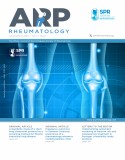Supervised and non-supervised physical exercises in patients with knee osteoarthritis: a systematic review and meta-analysis
Authors
Marco Aurélio Schiavon; Jocassia Silva Pinheiro; Rinaldo Roberto Guirro;
Keywords
Introduction: Analyzing the high cost of long rehabilitation programs and clinical experiences from the recent pandemic, the aim of the study was to compare the effect of supervised and non-supervised physical exercises in patients with knee osteoarthritis considering pain and function.
Methods: Searches were conducted on the database PubMed, EMBASE, PEDro, and Cochrane for randomized clinical trials (RCT) involving adults with knee osteoarthritis. The risk of bias was analyzed using the risk of bias 2 tool and quality of evidence, using the GRADE. Meta-analysis was carried out by applying the differences of means and heterogeneity by the I2 statistics.
Results: Regarding the results, 642 studies were checked, out of them 7 were included in the qualitative analysis and 6 on the quantitative analysis, of which 6 for the outcome pain and 5 for the outcome function. Total sample consisted of 903 individuals, mostly female, mean age 63.05 years (SD=4.40), and strengthening and aerobic exercises were the most used. In general, the risk of bias was considered uncertain, the randomization process was effective in most articles and participant blinding was impaired because of the intervention with exercises. According to GRADE, the quality of evidence was moderate for both outcomes. Treatment effect was estimated at -0.67 (CI 95%, -2.09 to 0.74) for pain and -1.07 (CI 95%, -4.30 to 2.16) for function, and heterogeneity was classified as high for both outcomes.
Conclusions: In conclusion, no significant differences were observed between supervised and non-supervised physical exercises in terms of pain and function of the osteoarthritis knee.
Marco Aurélio Schiavon
usp
Jocassia Silva Pinheiro
usp
Rinaldo Roberto Guirro
usp
usp
Jocassia Silva Pinheiro
usp
Rinaldo Roberto Guirro
usp





